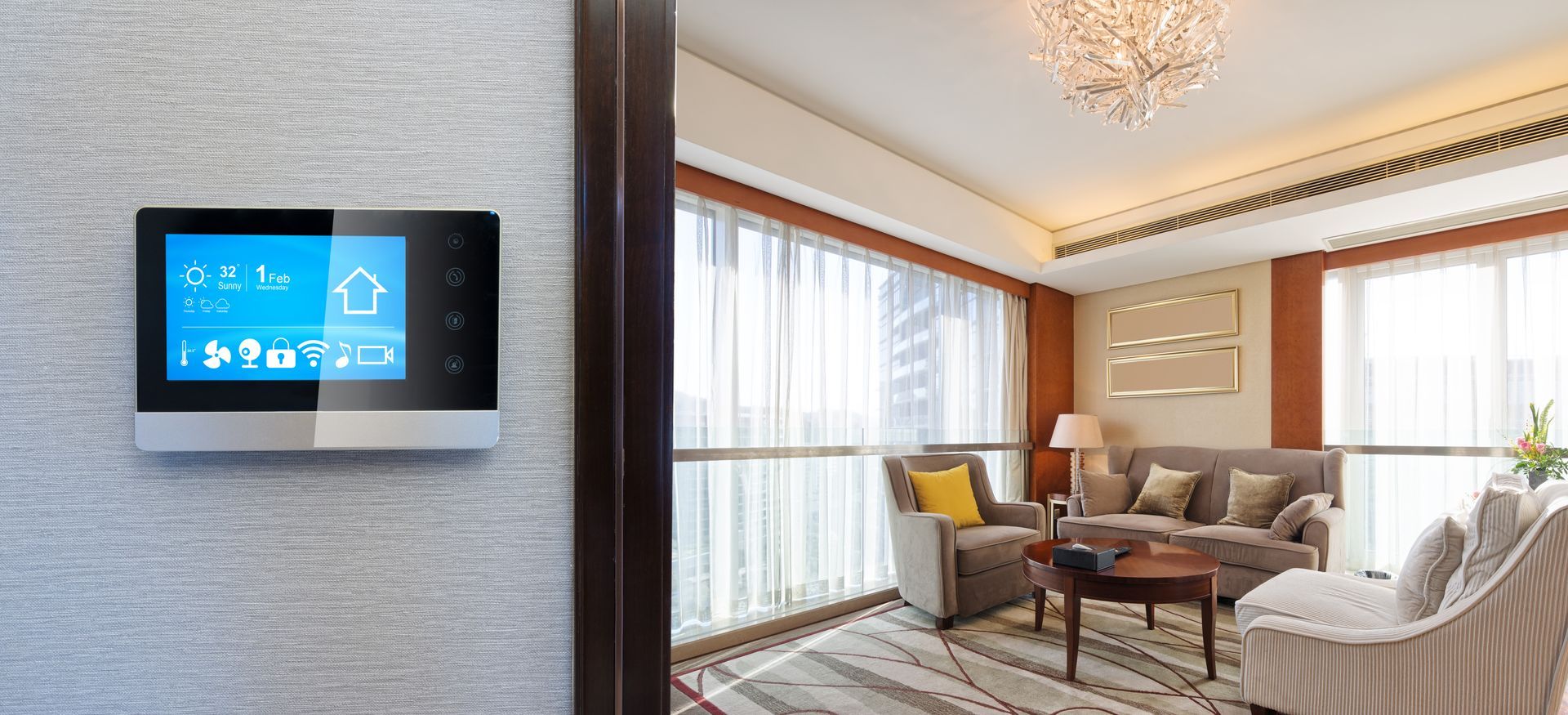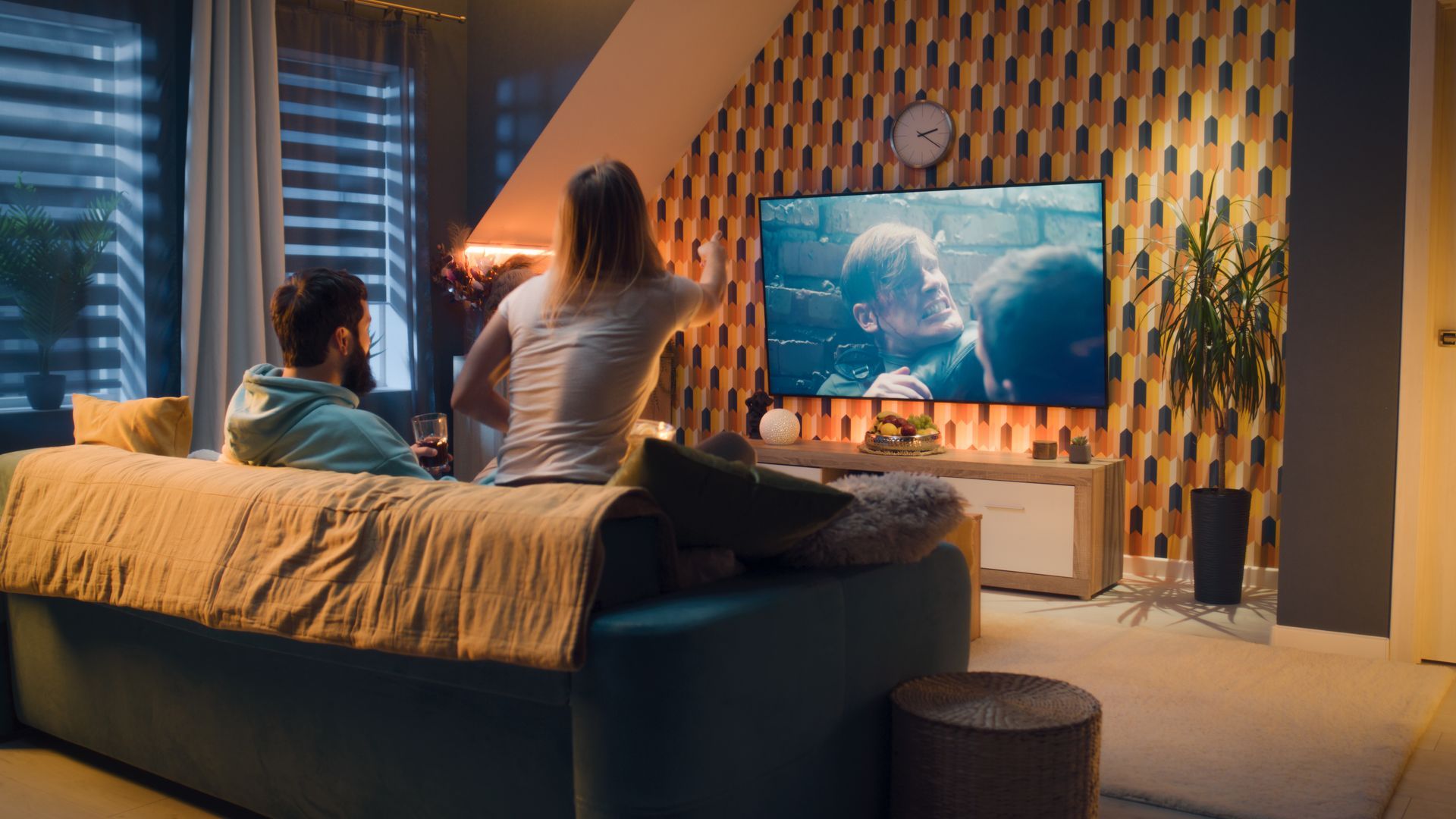Audio Visual Tips for Home Theaters and Personal Entertainment
Creating the perfect home theater or personal entertainment space is an exciting project. It’s a great way to enjoy movies, music, and games from the comfort of your home, but it can also be overwhelming to figure out the best setup. As a full-service audio/visual company, Eurotech Sound in Chicago, IL, specializes in designing and installing custom audio-visual systems to make your entertainment space the best it can be. Whether you’re planning to build a dedicated theater room or enhancing your living room for better sound and video, we’ve put together some expert tips to guide you through the process.
1. Selecting the Right Display for Your Space
The display is the centerpiece of any home theater, and choosing the right one is critical for a high-quality viewing experience. Whether you opt for a large TV or a projector depends on a few factors, including the size of your room, your budget, and your viewing preferences.
- TVs: For smaller spaces or multipurpose rooms, a high-quality 4K TV can be an excellent choice. Look for OLED or QLED screens for better color accuracy and contrast. A TV with a refresh rate of at least 120Hz will deliver smooth motion, which is important for watching sports or action movies.
- Projectors: If you want to replicate the feel of a movie theater at home, a projector is ideal for larger spaces. Pairing a high-definition projector with a quality screen will give you a crisp, immersive viewing experience. For best results, projectors should be used in rooms that can be darkened easily, as ambient light can reduce image clarity.
- Screen Size and Viewing Distance: For an optimal viewing experience, your screen size should be proportional to your room size. A general rule of thumb is to sit 1.5 to 2.5 times the diagonal screen size away from the display. So, if you have a 65-inch screen, you’ll want to sit about 8 to 13 feet away from it.
2. Choosing the Best Sound System for Immersive Audio
Sound is equally as important as visuals in a home theater or entertainment space. An excellent audio system creates an atmosphere that enhances the overall experience, whether you’re watching a movie or listening to your favorite album. Here are the key elements of an immersive sound setup:
- Surround Sound: A 5.1 or 7.1 surround sound system is a great choice for home theaters. These setups include multiple speakers: a center speaker for dialogue, front left and right speakers for music and sound effects, rear speakers for ambiance, and a subwoofer for deep bass. The 7.1 setup adds two additional rear speakers for an even more enveloping sound.
- Soundbars: If space or budget constraints are an issue, a high-quality soundbar can offer a substantial audio upgrade from your TV’s built-in speakers. Some soundbars come with subwoofers and surround sound capabilities, making them a versatile option for many home setups.
- Speaker Placement: The placement of your speakers is crucial to achieving the full surround sound effect. Make sure the front speakers are angled toward your seating area, and position the rear speakers slightly above ear level to create the immersive effect of sounds moving around you.
- Acoustic Treatment: To further enhance sound quality, consider adding acoustic treatments to your room. Sound-absorbing panels or curtains can help reduce echoes and reverberation, providing clearer and more defined audio.
3. Lighting and Ambiance Control
Lighting plays a key role in setting the mood for your home theater or entertainment room. Controlling the lighting ensures a better viewing experience and prevents distractions.
- Ambient Lighting: The best home theaters have controllable ambient lighting, meaning you can easily adjust the light levels depending on what you’re doing. Dimmable lights or smart lighting systems allow you to create the perfect ambiance for watching movies or playing video games. Avoid harsh overhead lights that could reflect off the screen and distract from the visuals.
- Backlighting: Installing backlighting behind your TV or screen can reduce eye strain and create a subtle yet appealing atmosphere. LED strip lights that change color or brightness can be installed around the screen or behind furniture for a modern touch.
- Motorized Shades: If your home theater has windows, motorized blackout shades are a must. They allow you to control the light entering the room with the touch of a button, ensuring the best picture quality and creating a cinema-like environment.
4. Optimizing Seating for Comfort and Viewing Experience
The seating arrangement in your home theater directly impacts your comfort and the overall experience. Whether you prefer reclining theater seats or a comfy sectional sofa, here are some tips for optimal seating:
- Distance from the Screen: As mentioned earlier, your seating distance should be based on the size of your screen. You want to be close enough to immerse yourself in the action but not so close that you can see the individual pixels or experience eye strain.
- Tiered Seating: For larger rooms, especially those dedicated to home theaters, tiered seating is an excellent option. It ensures everyone has an unobstructed view of the screen, even if the room accommodates multiple rows of seats.
- Comfort and Aesthetics: Invest in high-quality seating that combines comfort with durability. Leather recliners with cupholders and built-in armrest storage are popular in home theater settings. If your entertainment area is more casual, a sectional with soft, washable fabric might be the better choice.
5. Smart Home Integration and Control Systems
With advancements in technology, smart home integration can take your home theater to the next level. Controlling your entire system with a single remote or smartphone app simplifies the user experience and reduces clutter.
- Universal Remotes and Control Apps: Instead of juggling multiple remotes for your TV, audio system, and lighting, opt for a universal remote or control system that can operate everything seamlessly. Many systems, like Control4 or Crestron, allow you to control all aspects of your theater from one interface.
- Smart Assistants: Voice control through smart assistants like Amazon Alexa or Google Home adds an extra layer of convenience. You can use voice commands to dim the lights, turn on the projector, or start a movie.
- Automation: With automation systems, you can program different scenes for specific activities. For example, you can create a "movie night" scene that automatically dims the lights, powers up the projector, and adjusts the volume to your preferred settings—all with the press of a button.
Contact Eurotech Sound for Your Home Theater Installation Needs in Chicago, IL
At Eurotech Sound, we specialize in designing and installing customized audio/visual solutions for home theaters and personal entertainment spaces. Whether you’re looking to create a full home theater, install smart home technology, or upgrade to a smart energy management, our expert team will guide you through the process and ensure that every detail is perfect.
We take pride in providing tailored services that fit your specific needs and preferences. Contact us today at
(312) 927-3876 to discuss your project, and let’s work together to make your entertainment dreams a reality. Our experienced technicians are ready to transform your space with professional installation and superior service.
FAQs
How much does it cost to install a home theater system?
The cost of a home theater system varies depending on the components you choose and the complexity of the installation. On average, a basic setup can range from $2,000 to $10,000, while a more advanced system with custom seating, lighting, and automation could go upwards of $20,000 or more.
Can I use a soundbar instead of a surround sound system for my home theater?
Yes, a soundbar can be a more affordable and space-saving alternative to a full surround sound system. While it may not offer the same level of immersion as a multi-speaker setup, many modern soundbars come with subwoofers and support Dolby Atmos for an enhanced audio experience.
Do I need professional installation for a home theater system?
While some components of a home theater, like mounting a TV or connecting speakers, can be DIY projects, professional installation ensures optimal performance. Experts can handle complex wiring, speaker placement, and smart home integration to maximize your system’s potential.
What’s the difference between OLED and QLED TVs?
OLED (Organic Light Emitting Diode) TVs offer better black levels and contrast because each pixel emits its own light. QLED (Quantum Dot Light Emitting Diode) TVs, while brighter and better suited for well-lit rooms, use a backlight and can’t achieve the same deep blacks as OLED.
How can I minimize cable clutter in my home theater?
Cable management solutions like in-wall wiring, raceways, and cable ties can help reduce clutter. You can also consider wireless options for some components, like surround sound speakers, to keep cables to a minimum.
OUR RECENT POSTS



Our Services
BUSINESS HOURS
- Monday
- -
- Tuesday
- -
- Wednesday
- -
- Thursday
- -
- Friday
- -
- Saturday
- Closed
- Sunday
- Closed
Copyright. Eurotech Sound. All Rights Reserved.

